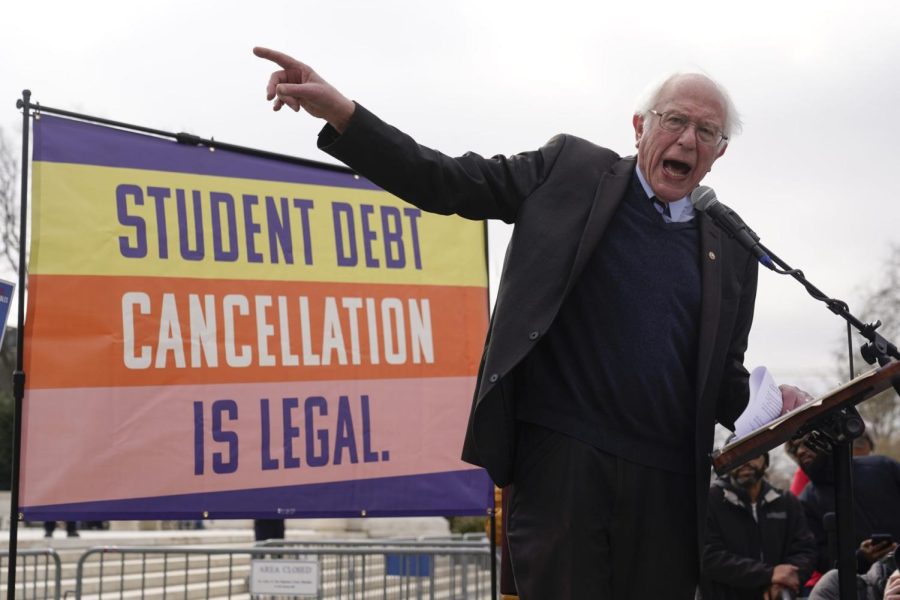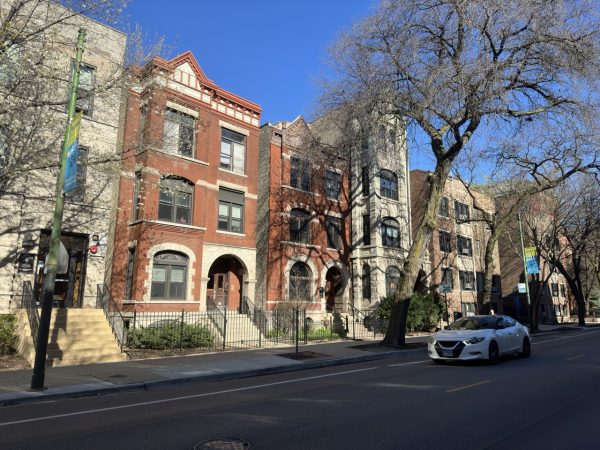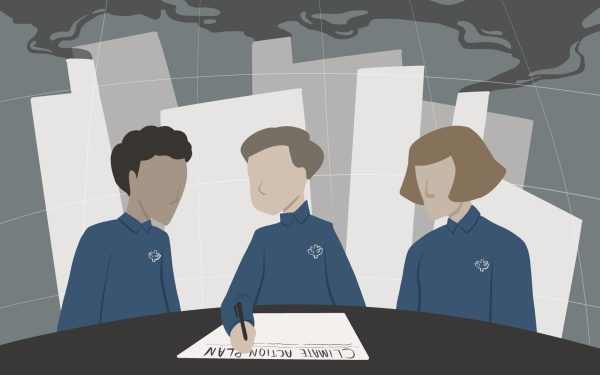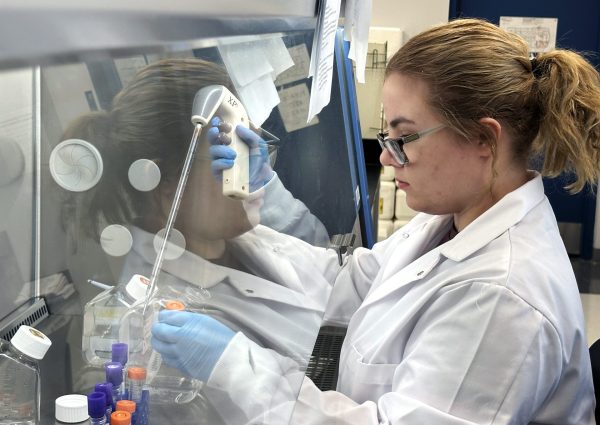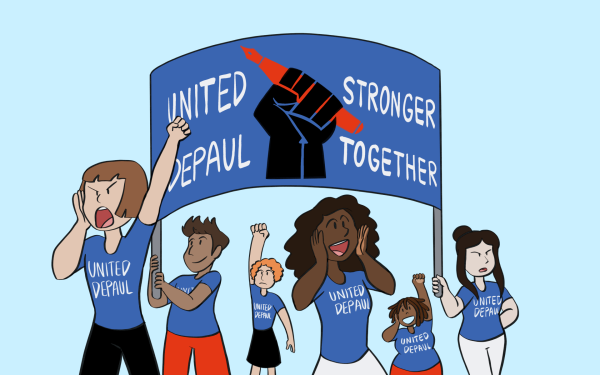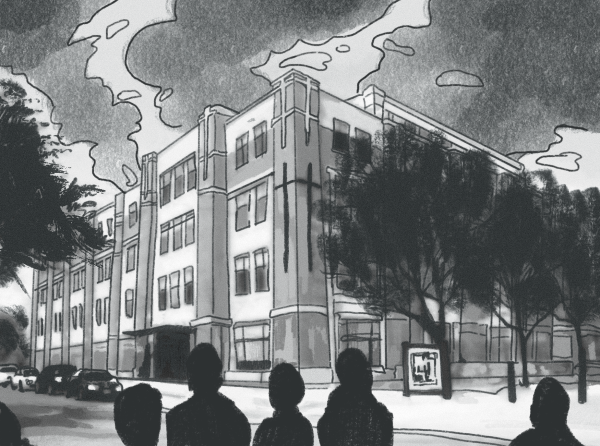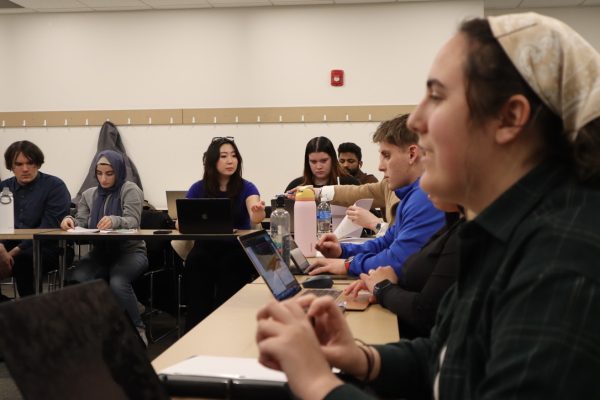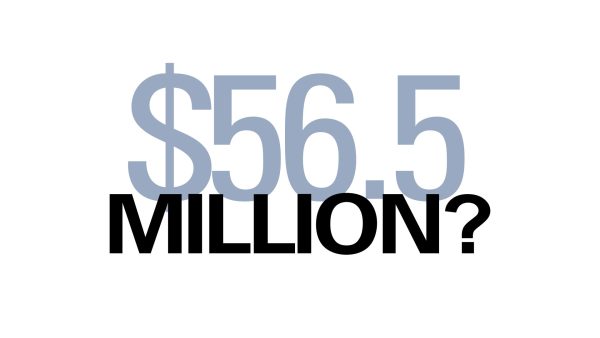The future of student loan debt forgiveness is in SCOTUS’ hands
Sen. Bernie Sanders speaks at a rally for student debt relief outside the Supreme Court in Washington on Tuesday, Feb. 28, as the court hears arguments over the plan.
There are over 40 million people with student loan debt in America who owe an average of $29,719 each, according to Emma Kerr and Sarah Wood of the U.S. News and World Report.
Rachel Perales, a sophomore at DePaul studying criminology in the BA/JD law program, worries about student loans and views Biden’s plan as a welcome reprieve.
“My college years are not only spent focusing on my studies but also trying to pull off a full-time job to cover some of the cost,” she said.
As a first-generation college student, Perales said that student loans are inevitable.
“I don’t come from the privilege of being able to know that my parents are there to financially support me,” she said.
Perales values that the Biden administration is seeking solutions to this problem that affects a large number of DePaul students, and college students throughout the country.
Susan Burgess, DePaul political science professor said that forgiving student loans would demonstrate that the federal government wants to foster and protect higher education.
“The cost of higher education has shifted onto students’ relief loans,” Burgess said “Biden is trying to address that and recreate the balance that once existed.”
Nearly half of a trillion dollars were at stake on Tuesday, Feb. 28 when the Supreme Court heard arguments for more than three hours from two cases, each challenging the legality of Biden’s student loan debt relief bill.
Justice Neil Gorsuch questioned the fairness of the loan forgiveness plan.
“I think the argument that is missing is the cost to other persons in terms of fairness,” Gorsuch said. “For example, people who have paid their loans … and people who are not eligible for loans in the first place.”
Grace Provan, a DePaul secondary education major, who qualifies for $20,000 in loan forgiveness, challenged the frame through which the fairness of this bill is scrutinized.
“I think when people are saying fairness, they have to consider the financial context in which fairness exists,” she said. “It’s not about equality. It’s about equity. How can everyone help each other?”
The plaintiffs in both cases claimed that the sweeping debt relief bill extends beyond the president and the Department of Education’s powers and requires input from Congress.
Biden v. Nebraska, filed by the attorneys general of Nebraska, Missouri, Arkansas, Iowa, Kansas and South Carolina, specifically argued that states would suffer negative financial consequences if student debts were not paid.
The second case, Department of Education v. Brown, was filed by two students from Texas who do not qualify for debt forgiveness and believe the Department of Education should have asked for broader input about the plan, according to Leo Aquino of Business Insider.
On Tuesday, conservative justices seemed to find merit in the call for Congress to be the legislative body to pass the debt relief bill that would impact over 40 million Americans.
U.S. Solicitor General Elizabeth Prelogar disputed this during the hearing by citing the 2003 Higher Education Relief Opportunities for Students Act (HEROS) that allows the president and Department of Education to dismiss federal student loan debt amid a national emergency, such as the Covid-19 pandemic.
Dr. Robert Kallen, visiting professor of economics at DePaul, said that Biden’s plan pushes the limits of executive power.
“I won’t say it’s total overreach, but I think there’s a huge problem and what you’re seeing is a failure of Congress to address it,” Kallen said.
He believes a lack of cooperation between the executive and legislative branches prompted Biden and the Department of Education to forgo a congressional approach and rely on the HEROS act to pass the debt relief bill.
Dr. Scott Hibbard, chair of DePaul’s political science department, said that the idea of debt forgiveness for student loans is within the executive branch’s authority, but the scale of the decision warrants checks and balances.
“The extremely large amount of money involved raises legitimate questions about whether or not it triggers the major questions doctrine,” Hibbard said.
The major questions doctrine refers to the need for Congress to authorize decisions with broad economic and national significance.
“In a perfect world, President Biden would have gone to Congress for authorization, but given the acrimonious nature of American politics at this moment, that would have never happened,” Hibbard said.
Provan believes that Congress needs to play a larger role in regulating the cost of college.
“When education is costing more than what a person makes in a year, then education costs too much, especially when a lot of jobs require a B.A. or even a masters,” Provan said.
On Tuesday, the Supreme Court addressed the question of congressional approval, but also examined whether the cases against the bill have legal merit.
Though Kallen believes debt relief could be a questionable extension of executive power, he does not believe the states filing the lawsuit have legal standing, meaning the plaintiffs lack a legitimate argument in their case.
“Normally with standing, you have to have injury,” Kallen said. “Are the states really the ones who are suffering the injury? The answer is no. It’s the individuals that are suffering the injury or the benefit of this program.”
He said that if anyone has legal standing, it is the plaintiffs in Department of Education v. Brown, because they bring a case for individual suffering due to unforgiven loan debt under this legislation.
Since the outset of the pandemic, there has been a freeze on student debt payments because the Trump and Biden administrations employed the 2003 HEROS act. This means that borrowers have had a reprieve from student loan payments for nearly three years.
Biden’s three-part plan aims to continue this trajectory.
The plan, first proposed in August 2022, promises to relieve up to $20,000 of debt for Pell Grant recipients and up to $10,000 of debt for non-Pell recipients who earn less than $125,000 annually. It also proposes to reduce monthly loan payments by 50% for undergraduate borrowers and monitor increases in college tuition.
Hibbard said that in the early 1980s, higher education was promoted as a way to win the Cold War and was therefore largely federally subsidized. In the late ‘80s and early ‘90s, though, he said conservative politicians promoted privatizing college costs, which has led to an explosion of student debt.
Both Perales and Provan, who are Pell Grant recipients that qualify for maximum debt forgiveness, believe that higher education is becoming more and more necessary, and as a result, costs must be more realistic.
“We’re told to go to college and get a degree and we’ll be fine,” said Perales. “But now, even college-level jobs aren’t able to pay off all the debt.”
Provan questioned the broader economic scope of student loans as she prepares to begin professional life.
“How do you ever get done with this [student loans]? ”Provan said. “How can I, as a person that’s about to go out into the world, start replenishing the economy? How can I pay for groceries? How can I afford an apartment or a house?”
Kallen pointed to the economic benefits of relieving student debt.
“This increases people’s disposable income and takes away a little bit of the debt load,” Kallen said. “It becomes what I would refer to as an economic multiplier.”
He explained that for borrowers it is not just a matter of paying off debt. Giving people more breathing room financially allows them to invest in other expenses that can boost the economy.
“The economic impact for an entire generation will be huge,” said Hibbard. “It will allow them to buy homes, start families and get on with life on a sound economic footing, which will have significant implications for the broader economy.”
16 million Americans have already been approved for debt forgiveness, now it is up to the Supreme Court to uphold its legality.
Kallen predicted the Court’s decision will be released in mid-June, saying that high-profile cases such as this are often pushed to the beginning of summer.
Burgess believes a conservative decision to deny this bill would further alienate the Supreme Court from dissatisfied Americans.
“If the Supreme Court decides to use its power to block or to allow states to block this initiative, that’s going to further anger a significant part of the country,” Burgess said.
Both Kallen and Provan are not optimistic that the Supreme Court will pass student loan debt relief and are discouraged about the gridlock affecting America’s very partisan political system.
Nevertheless, they encouraged everyone to vote to impact politics in the future.
“There’s not anything we can do about the Supreme Court, but we can at least get our voices heard with politicians in Congress,” said Provan. “We’ve seen the change we can make.”
DePaul’s tuition for the 2023 school year is $42,840, not including housing and additional fees, usually costing around $20,000. 98% of incoming freshmen receive some scholarship, but most students still accumulate close to the national average of about $28,000 each year.


